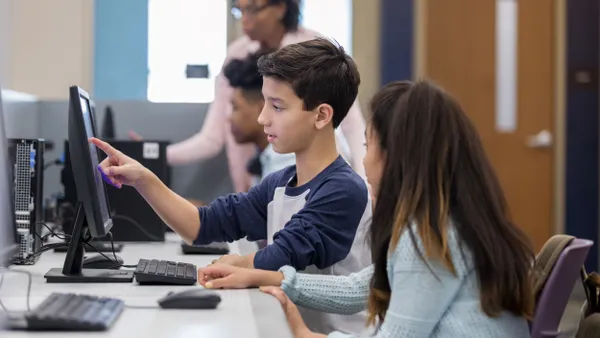Dive Brief:
-
A 1995 study that showed a 30-million word gap by age 3 between children in high-income families and those in low-income homes is frequently referenced in connection with efforts to improve early literacy skills, but a new study appearing in the Harvard Research Review suggests efforts to narrow the gap have created “deficit-based thinking” among educators toward low-income immigrant students from Latin America, writes Jenny Muñiz of New America.
-
The researchers showed teachers, administrators, parents and 1st-graders a film in which children are working cooperatively, making decisions and participating in an active learning environment.
-
The adults viewing suggested that such practices would not work for their Spanish-speaking students because they had more limited vocabularies, while the children responded that the students in the film were “bad” because they got up to talk to peers without permission.
Dive Insight:
The findings, Muñiz writes, suggest that teachers need more training on working with children of color and that classroom environments in which students have more agency can help to improve language skills. “With effective professional development, teachers can learn to implement more equitable strategies, such as honoring existing home language skills, using students’ cultural capital, building on student bodies of knowledge, and upholding rigorous expectations,” she writes.
In addition to supporting teachers’ skills, schools can also make sure they are connecting with parents of English learners to share information on how they can support their children’s vocabulary development and working with community partners that also serve families, such as child care providers and libraries.






 Dive Awards
Dive Awards





